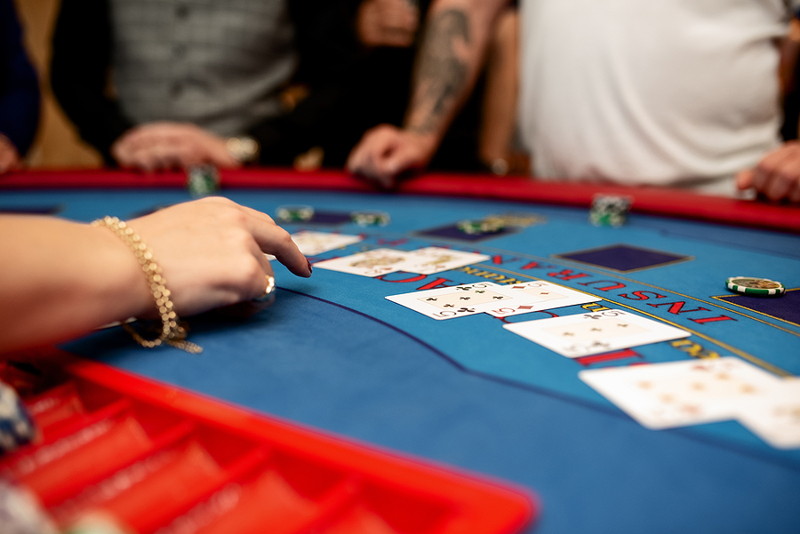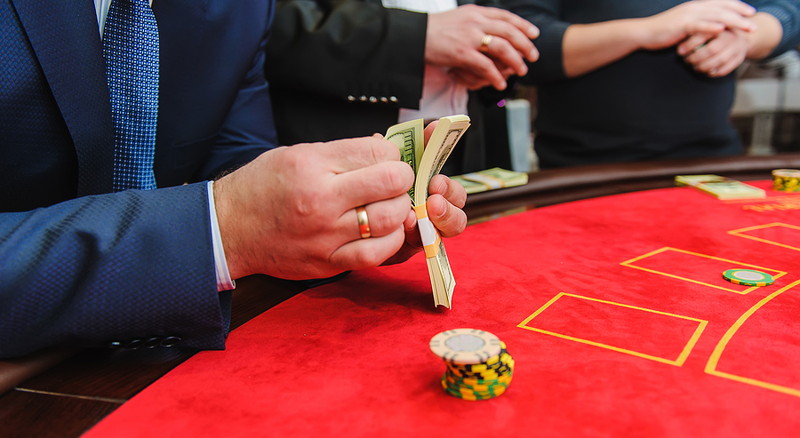 Card counting has long been associated with the game of blackjack, captivating the imagination of both gambling enthusiasts and the general public alike. It is a technique that allows skilled players to gain an edge over the casino by keeping track of the relative abundance of high and low-value cards remaining in the deck.
Card counting has long been associated with the game of blackjack, captivating the imagination of both gambling enthusiasts and the general public alike. It is a technique that allows skilled players to gain an edge over the casino by keeping track of the relative abundance of high and low-value cards remaining in the deck.
The art of card counting requires a combination of mathematical prowess, sharp observation and stealthy execution. The world of card counting is not without its controversy, which is why casinos ban players that are guilty of engaging in it.
Whilst its might sound like a sure-fire way to make some money, the reality is that card counting isn’t an easy thing to do. Typically it involves a team of people working together, whilst the risks of being caught are numerous. Add into that the fact that casinos are now wise to those that might look to count cards and you can see why it isn’t all that common to read about card counting groups taking on the House any more.
It is tougher than ever to count cards, whilst the invention and explosion of online blackjack means that it is all but impossible to do in the majority of games.
Understanding Card Counting
 Card counting is a strategy employed in blackjack, where players attempt to gauge the ratio of high to low-value cards remaining in the deck of cards being used by the dealer. The fundamental premise behind card counting is that when the deck is rich in high-value cards, such as tens and aces, the player’s chances of winning increase, as they are more likely to be dealt strong hands.
Card counting is a strategy employed in blackjack, where players attempt to gauge the ratio of high to low-value cards remaining in the deck of cards being used by the dealer. The fundamental premise behind card counting is that when the deck is rich in high-value cards, such as tens and aces, the player’s chances of winning increase, as they are more likely to be dealt strong hands.
The reverse of that is when the deck is filled with low-value cards, such as those between two and six, when the advantage shifts in favour of the dealer and players need to be more frugal in their betting.
There are several different systems that can be used when it comes to card counting, but it isn’t all that easy to understand how it works. That is to say, if it was just a matter of a player memorising all of the cards that have been dealt, thereby knowing exactly what was still in the deck, then that would be relatively easy to understand.
It would, of course, be all but impossible for anyone to do, but it is helpful to mention it as a ‘simple’ way of thinking about a form of card counting. In reality, it is more about the potential value of what is left in the deck rather than the exact cards.
The High-Low System

One of the most widely known and utilised card counting systems is the High-Low system. Developed by Edward Thorp in the 1960s, this method assigns a point value to each card. High cards, which are basically tens and aces, are assigned a value of -1. Any of the low cards, which are the ones between two and six, are given a value of +1.
Cards with a value of seven, eight or nine have a neutral value and are not counted. The player keeps a running count of the card values as they are dealt by adding or subtracting, allowing them to make informed decisions about the bets that they are placing.
Once a player has mastered the counting side of the High-Low system, the next step is to apply the count to their betting decisions. A positive running count indicates that the deck is rich in high-value cards. It is at this point that the player has the advantage and needs to take it. In this scenario, the player may increase their bets with the aim being to capitalise on the favourable conditions.
When the count is on their side, the likelihood of getting a hand such as blackjack is much higher. This is why card counters will look to bet more heavily when the count is high.
On the flip side, a negative running count signifies that the deck is filled with low-value cards, reducing the advantage that the player has. During these times, it is prudent to decrease bets or even refrain from playing altogether until the deck becomes more favourable. This is because low cards suggest that the dealer is more likely to have the high hand at the end of the betting, or you will need to keep receiving cards to the point that you will probably end up going bust. After all, just because the count is low doesn’t mean that there are no high cards at all in the deck.
To further refine their betting decisions, players can calculate the ‘true count’. The true count is obtained by dividing the running count by the estimated number of decks remaining in the shoe. It provides a more accurate assessment of the advantage or disadvantage for the player.
The true count takes into account the number of decks remaining, as a higher count in a deck with fewer cards left has a more significant impact. That is to say, if your current count is high and there’s only, say 70 cards left in the shoe, at an estimate, that means that the ‘true’ count is higher still.
The High-Low system is a relatively easy one to learn and implement, which is why it is a popular choice for beginners hoping to learn how to count cards. It provides a solid foundation for understanding the principles of card counting and can be a stepping stone to more advanced counting systems. However, it’s important to remember that card counting alone does not guarantee profits. Successful implementation requires skilful decision-making based on the count, proper bankroll management as well as a thorough understanding of blackjack Basic Strategy.
The Importance Of Mixing Things Up
 While card counting can provide players with an Edge, it is important to note that success is not solely reliant on the count. Casinos employ counter-measures to deter card counters, such as shuffling the deck more frequently or using automatic shuffling machines.
While card counting can provide players with an Edge, it is important to note that success is not solely reliant on the count. Casinos employ counter-measures to deter card counters, such as shuffling the deck more frequently or using automatic shuffling machines.
To counteract these counter-measures, players must employ deviation strategies. Deviation involves altering playing decisions based on the count, such as taking insurance or doubling down on certain hands when the count is highly positive. This element of decision-making helps card counters blend in with the average player, reducing suspicion from casino personnel.
Anyone that has done any research at all into Basic Strategy will know that avoiding the likes of insurance is an absolute must if you want to increase your profits as much as possible. The House already has a large Edge in all casino games, but that goes up even higher if you start looking at taking insurance and other such strategies employed by the casino to take your money.
It is really only suckers who don’t understand their chances of winning who opt for the likes of insurance, which is why doing so will, even if only temporarily, throw casinos off the scent of your card counting exploits.
Advanced Card Counting Techniques

Beyond the High-Low system, there are more advanced card counting techniques that skilled players can explore. These include systems like the Hi-Opt II, Zen Count or the Knock-Out Count. The Hi-Opt II card counting system is used by experienced blackjack players to gain an edge over the casino and is a more complex and nuanced counting system than the traditional High-Low method, incorporating additional card values and requiring more meticulous tracking and calculations. It assigns the following point values to each card:
- High cards: -2
- Low cards: +1
- Neutral cards: 0
- ‘Preferred’ cards, which are 3s, 4s, 5s and 6s: +2
The inclusion of the ‘preferred’ cards with a higher positive value is what sets the Hi-Opt II system apart from simpler counting methods. This modification accounts for the fact that removing low cards from the deck has a greater impact on the player’s advantage. To use the Hi-Opt II system, players maintain a running count by adding and subtracting the assigned point values of the cards as they are dealt in much the same way as with the High-Low system, with the running count providing an estimate of the composition of the remaining cards in the deck.
Similar to other counting systems, a positive running count indicates a higher proportion of high-value and preferred cards remaining in the deck, giving the player an advantage, whilst a negative running count suggests a greater number of low-value cards, reducing the player’s advantage. The best players will also look to identify the ‘true’ count where they can. The Hi-Opt II system requires more mental calculations and concentration compared to simpler counting methods. It is considered more powerful because it provides a more accurate estimation of the advantage and allows for more precise betting and playing decisions.
The Zen Count, meanwhile, was developed by Arnold Snyder and introduced the ‘true’ count as standard. The running count is still used to gauge the state of the deck at any given moment, with the hope of those that use the Zen Count being that a more accurate count will be available at all times. The advanced nature of it means that fewer people will be able to use it in order to count cards, which is why only those that have mastered the other card counting methods should consider it. Here are the values of cards in the Zen Count:
- 2, 3, 7: +1
- 4, 5, 6: +2
- 8, 9: 0
- 10, Jack, Queen, King: -2
- Ace: -1
The whole point of the Zen Count is that you should be able to count through the whole deck and end up with 0. When the true count is at 0 or lower, you’ll opt to place the minimum bet that you’re allowed to. Each time the count goes up, you’ll then increase your minimum bet by one unit. The hope is that by only increasing your count steadily, the casino won’t notice that you’re counting cards.
The Knock-Out Count, meanwhile, doesn’t end up at 0 when you count the whole deck. As a result, this is known as an ‘unbalanced’ card counting strategy. It is often the first stop for people looking for a more complex card counting strategy and came to prominence thanks to the book Knock-Out Blackjack: The Easiest Card Counting System Ever Devised by Olaf Vancura and Ken Fuchs. When you first join the game, your running count is 0. As you see more cards, you assign them values of either -1, 0 or +1 and add that to your running count. The following are the point assignations:
- 2, 3, 4, 5, 6, 7: +1
- 8, 9: 0
- 10, Jack, Queen, King, Ace: -1
As soon as your count hits +2 the deck is in your favour and your advantage increases as the count does. Your bets should increase at a steady rate, only slowing when the count drops back to +1 or lower. The interesting thing about this card counting method is that when it hits +3 it becomes good value to take insurance, which is normally bad value when playing blackjack.
Is Card Counting Illegal?

The obvious question to ask is whether or not card counting is illegal. After all, you’re doing something that is giving you an advantage over the casino. The answer is that card counting itself is not illegal, as it involves using your intellect to analyse and make decisions based on the cards that have been dealt.
It is a strategy employed by some blackjack players to gain an Edge over the casino, yes, but in most jurisdictions there are no laws that specifically prohibit it. It is important to note, though, that casinos have the right to refuse service to players they suspect of counting cards.
While card counting is not illegal, casinos are private establishments and they can set their own rules regarding who they allow to play at their tables. If a player is suspected of counting cards, the casino may take measures to deter or identify them before asking them to leave or banning them from the premises.
It is worth mentioning that some jurisdictions have specific regulations that prohibit the use of certain devices or techniques that aid in card counting, like electronic devices or the act of marking cards. These activities are considered cheating and are illegal.
Ultimately, it is essential to familiarise yourself with the laws and regulations regarding gambling and card counting in your specific area. While card counting itself is not illegal, players should always adhere to legal and ethical considerations, respect casino rules and play responsibly.
